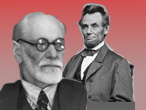With the coalition built by Franklin Delano Roosevelt, the Democratic party in America began a run that has endured to this day. He built that coalition with the outs, the have-nots, the poor, the disadvantaged, the discriminated. This was summed up in one big term: The Little Guy.
Anyone who did not feel all that successful or prosperous could identify with that term. And, after all, how many people really walk around thinking of themselves as The Big Guy. Really, it was people who felt OK vs those who did not. The latter will always make up a larger part of a population, so he won, and won, and won. . .and won.
It’s not so surprising that that coalition survived. They were the beneficiaries of the New Deal. Government was going to give them what they could not otherwise get. Why wouldn’t they continue to vote for the Democrats?
It’s also not surprising the Democratic politicians continue to support the focus on the oh so numerous little guys. Many have said they pay for votes with taxpayer money. So far, there is nothing profound here.
What is surprising and generally unexplained is who the other Democrats are. That is, who are the Democrats who do not benefit from little guy votes, who are not little guys, and who are not even developers and other large contributors who directly benefit from government deals.
These other Democrats are academics, entertainers, some successful financiers and business executives, and comfortable suburbanites. It is these who make the difference, at least in recent elections. So, what draws them to the Democrats? They even have something to lose in terms of taxes, which they will not get back in benefits. In short, they seem to be acting against their own self interest.
Some proportion of them consists of Democrats by inheritance. They likely grew up in Democratic households and, identified with their parents, maintained their allegiance to their parents’ political persuasion.
But there must be something else at play for people to act against their own self interest, and there is. Remember, the balance between self interest and other interest that began in childhood continues throughout life. Depending on the situation, one or the other governs our decisions. Certainly in times of plenty, people feel comfortable giving to others. In times of scarcity, people tend not to do so.
This is all at the conscious level. It is the unconscious reasons that create the unexplained. In addition to those big guys whose identification with their little guy parents is stronger than their self interest, there is the helping reflex. The helping reflex is part of the nurturing drive, which is part of the drive to reproduce. There is pleasure at each of these levels. Pleasure at reproducing, pleasure at nurturing, and pleasure at helping.
It is only when the pain of too much giving is strong enough to outweigh the pleasure of helping, that this changes. The reality principle makes it evident that pleasurable behavior must be curtailed. However, if and when there is plenty again, the pleasure principle rules, and the other Democrats return.
At least in the “other Democrats”.

 Can you immagine how the political ideas and aspirations envisioned by Abraham Lincoln and the exploration of the psychological mind explored by Sigmund Freud can be seen as one entity?
Can you immagine how the political ideas and aspirations envisioned by Abraham Lincoln and the exploration of the psychological mind explored by Sigmund Freud can be seen as one entity?
We do want to see the poor less poor – not necessarily with handouts but with education, healthcare, clean environment etc.
But we also see corporate greed eating into our (upper-middle-class liberals) salaries, so we win and the poor win. Not just the poor wins when we vote democrat – as you try to write.